
Unlocking English Fluency: The Indispensable Role of Articles Worksheets (a, an, the)
English grammar, with its intricate rules and countless exceptions, often presents a formidable challenge to learners worldwide. Among the most subtle yet pervasive elements are articles: "a," "an," and "the." These tiny words, often overlooked, play a monumental role in conveying precision, specificity, and general meaning in both written and spoken English. Mastering their correct usage is not merely about grammatical accuracy; it’s about achieving clarity, coherence, and ultimately, fluency. For educators, parents, and self-learners alike, the journey to article mastery is significantly aided by a structured and repetitive approach, for which Articles worksheets (a, an, the) stand out as an indispensable tool.
The Elusive Nature of Articles: Why They Pose a Challenge
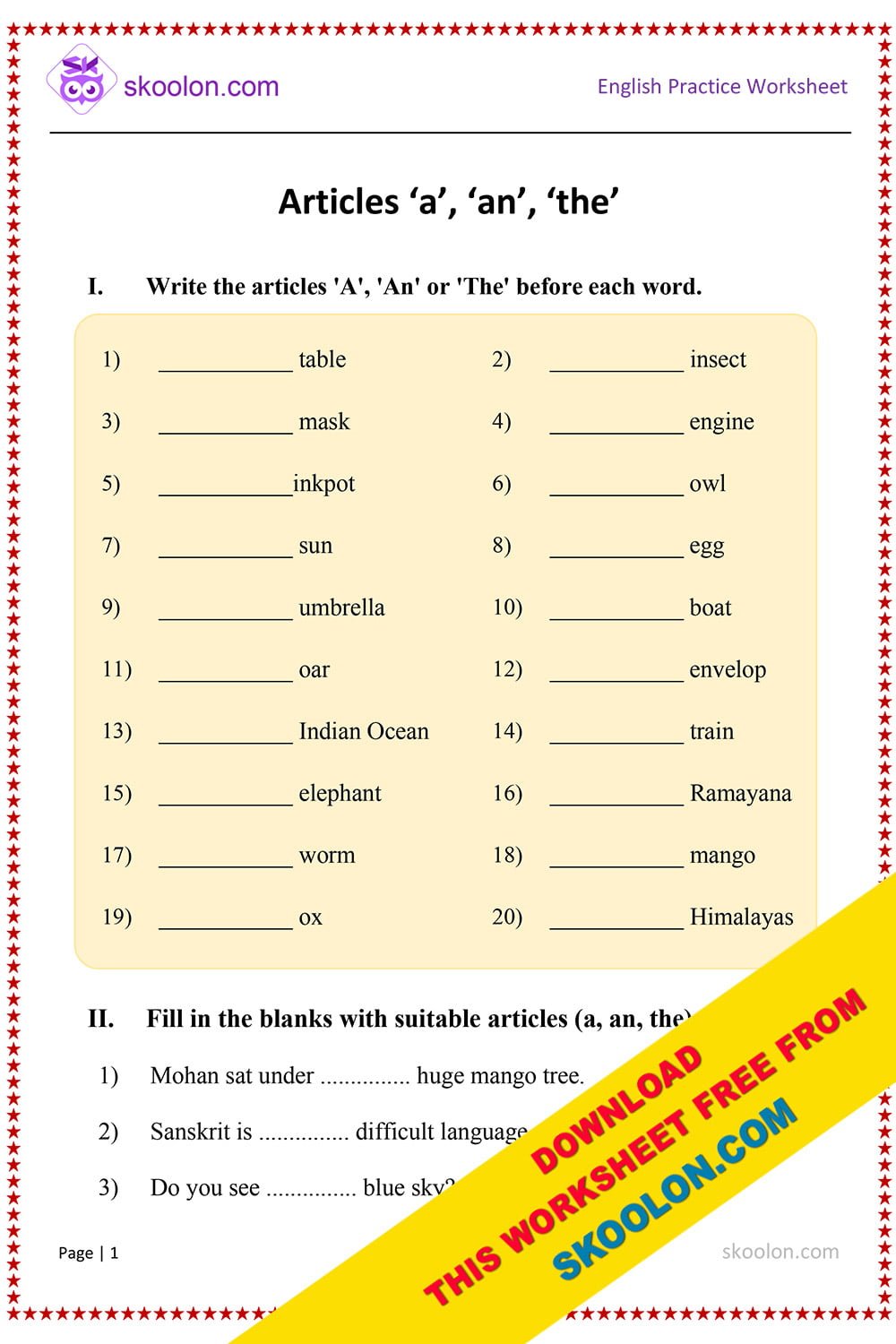
Articles are determiners that precede nouns, indicating whether the noun refers to a specific entity or a general one. "A" and "an" are indefinite articles, used with singular, countable nouns when the noun is non-specific or introduced for the first time. "The" is the definite article, used with specific or previously mentioned nouns, or nouns that are unique. The absence of direct equivalents in many languages (like most Slavic languages or Japanese) makes them particularly challenging for non-native speakers.

Consider the subtle differences:
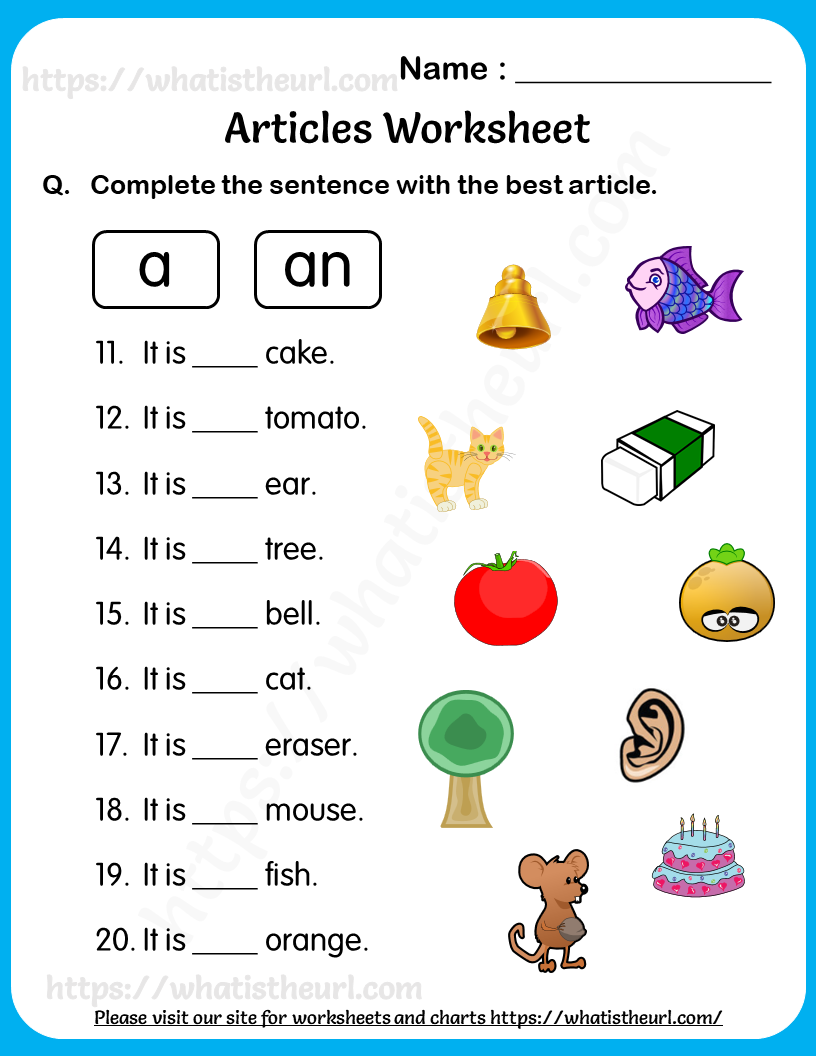
- "I saw a dog." (Any dog)
- "I saw the dog." (A specific dog, known to both speaker and listener)

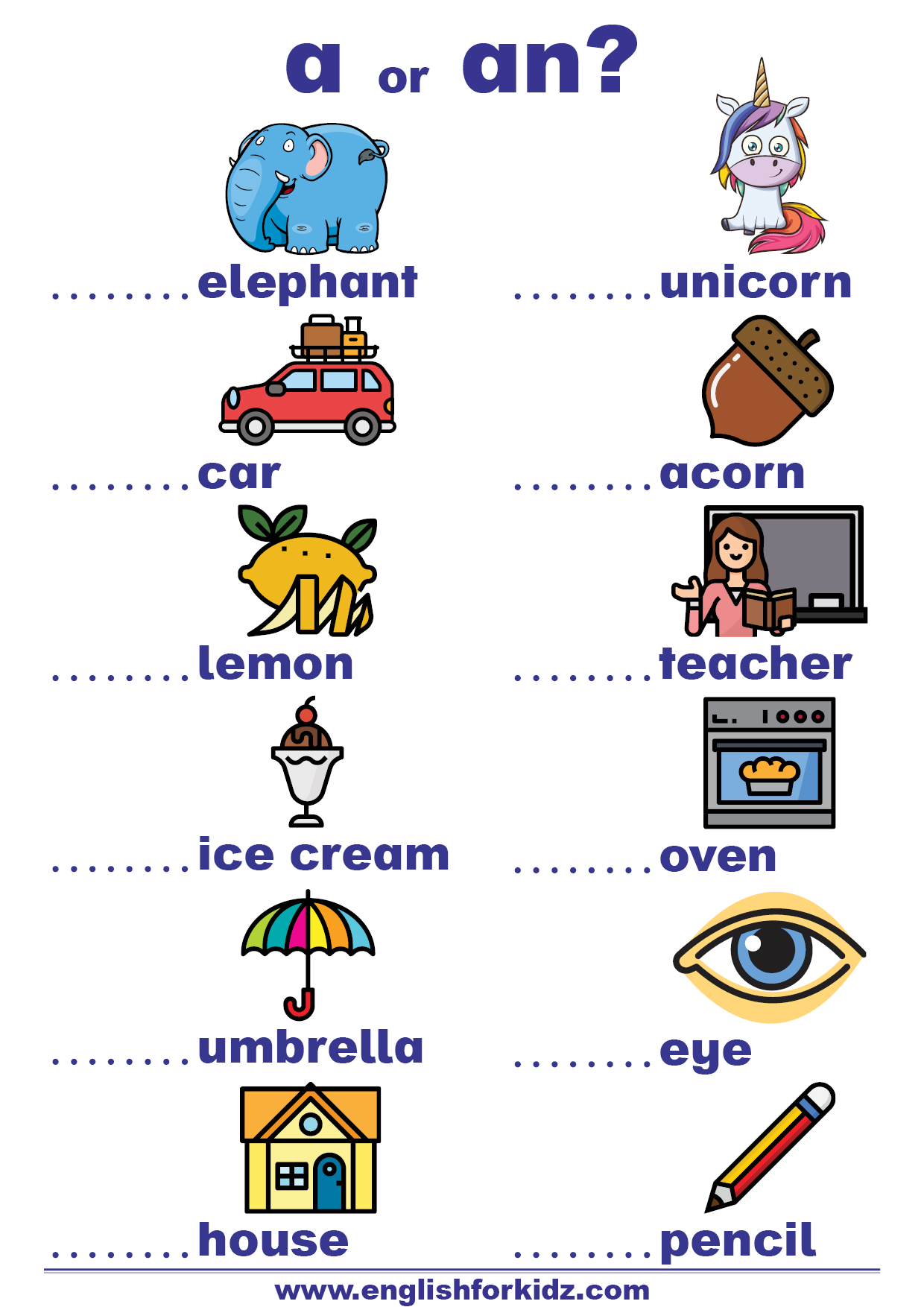
The complexity deepens with uncountable nouns, plural nouns, proper nouns, and a myriad of idiomatic expressions where articles behave unpredictably. Learners often struggle with:
- When to use "a" vs. "an" (based on sound, not just letter).
- When "the" is required versus when it’s omitted (the zero article).
- The nuanced difference between using an article and omitting it in general statements (e.g., "Life is hard" vs. "The life of a student is hard").
- Exceptions related to geographical names, institutions, and time expressions.
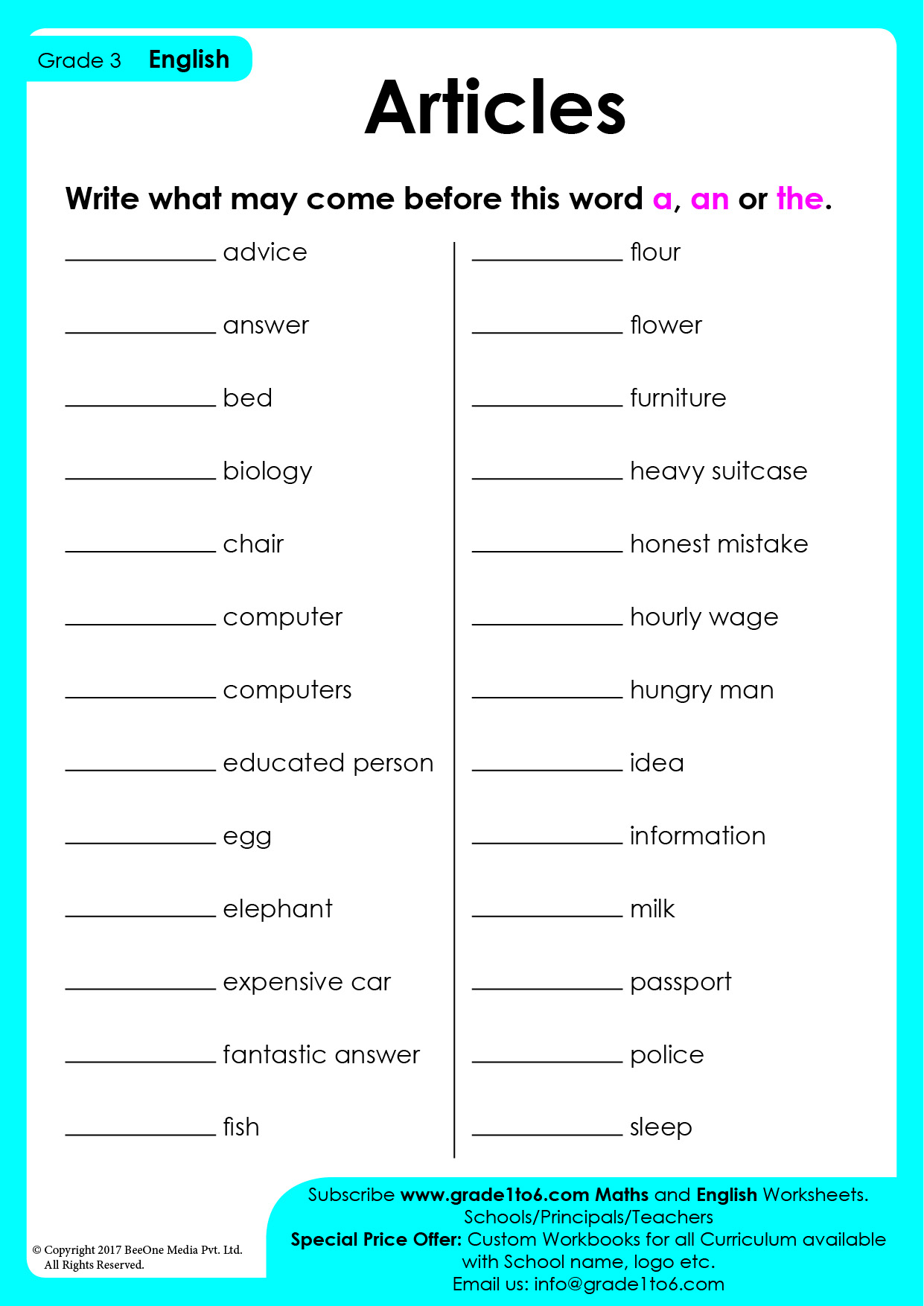
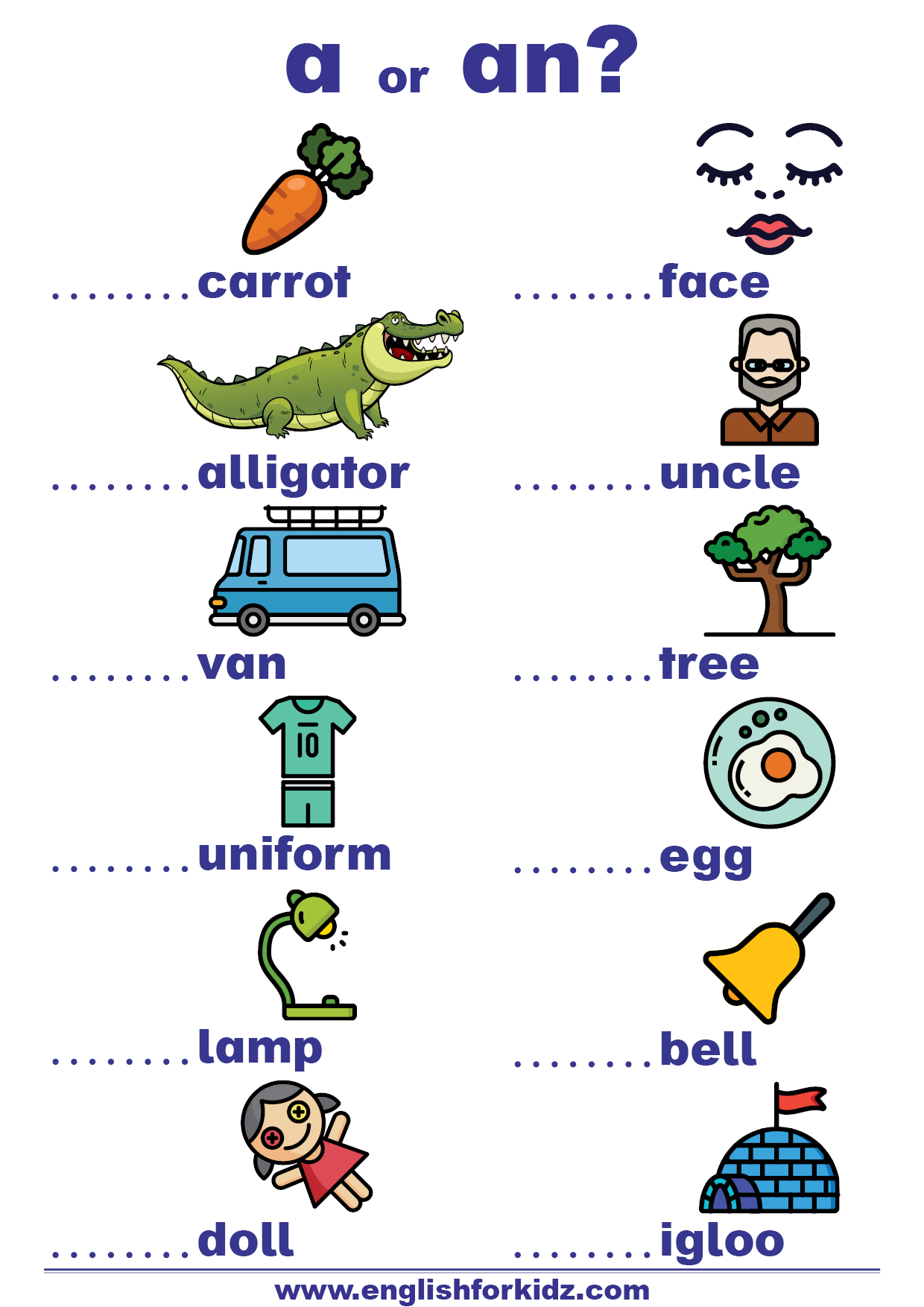
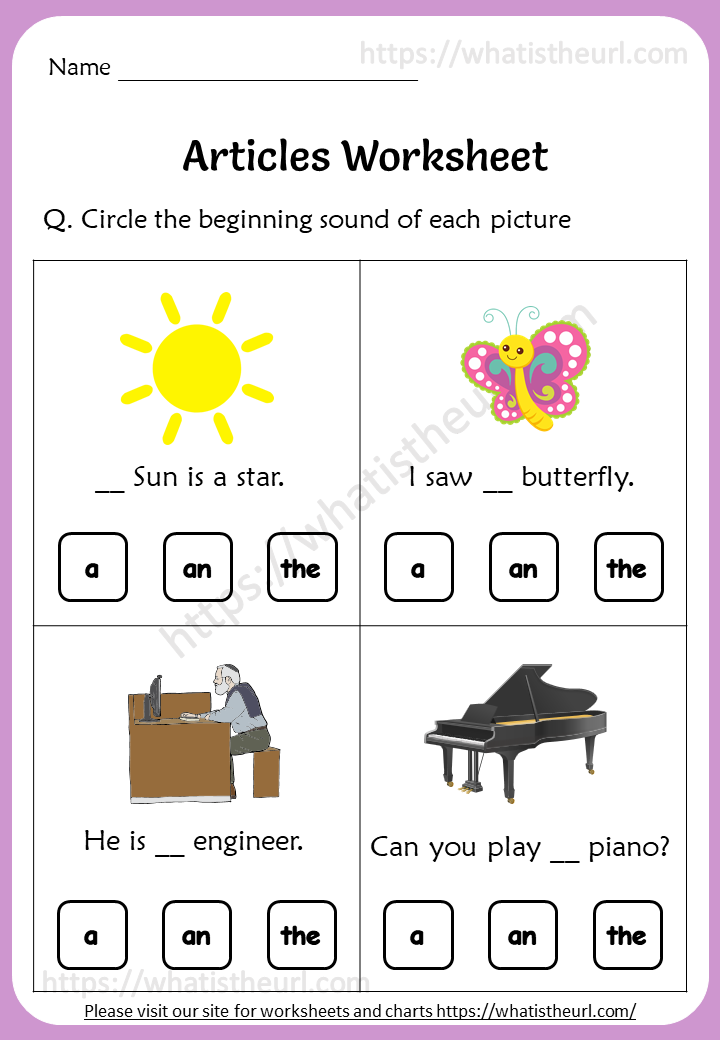
Without dedicated practice, these errors become ingrained, hindering effective communication and often leading to misinterpretations. This is precisely where the structured and repetitive nature of Articles worksheets (a, an, the) proves invaluable.
The Indispensable Role of Articles Worksheets

Worksheets provide a controlled environment for focused practice. They break down complex grammatical rules into manageable, bite-sized exercises, allowing learners to internalize concepts through repetition and immediate feedback. For articles, in particular, worksheets offer several key benefits:
- Targeted Practice: They isolate the usage of "a," "an," and "the," preventing learners from being overwhelmed by broader grammatical complexities.
- Repetition for Retention: Consistent exposure to various scenarios helps solidify the rules and exceptions in memory.
- Error Identification: Worksheets often highlight common mistakes, allowing learners to pinpoint their weaknesses and work on them.
- Contextual Application: Many worksheets present articles within sentences or short paragraphs, demonstrating their use in natural language.
- Foundation for Fluency: Mastering articles through structured practice builds confidence, which is crucial for moving towards spontaneous and accurate communication.
The fundamental importance of Articles worksheets (a, an, the) cannot be overstated in a comprehensive English language curriculum. They serve as the bridge between theoretical understanding and practical application.
Deconstructing ‘A’ and ‘An’: The Indefinite Articles
The choice between "a" and "an" is determined by the sound of the word immediately following the article, not necessarily the first letter.
- Use "a" before words that start with a consonant sound: a book, a cat, a university (the ‘u’ here sounds like ‘yoo’).
- Use "an" before words that start with a vowel sound: an apple, an elephant, an hour (the ‘h’ here is silent).
Common errors arise when learners focus solely on the spelling rather than the pronunciation. Articles worksheets (a, an, the) designed for indefinite articles typically include:
- Fill-in-the-blanks: Sentences where learners choose between "a" or "an" (e.g., "She has ___ interesting idea.").
- Picture-based activities: Learners identify objects in pictures and write the correct indefinite article before their names (e.g., an elephant, a tree).
- Word lists: Learners categorize words into "a" or "an" columns based on their initial sound.
- Sentence creation: Prompting learners to create sentences using given nouns with the correct indefinite article.
These exercises repeatedly expose learners to the sound rule, helping them develop an intuitive understanding rather than just rote memorization.
Mastering ‘The’: The Definite Article
"The" is arguably more complex than "a" or "an" due to its numerous specific uses and instances of omission. It is used:
- When referring to something specific or unique: The sun, the Eiffel Tower, the capital of France.
- When something has already been mentioned: "I saw a dog. The dog was barking loudly."
- With superlatives: The tallest building, the best student.
- With certain geographical features: The Amazon River, the Sahara Desert, the Pacific Ocean.
- When referring to a specific group of people: The rich, the poor, the elderly.
- With musical instruments: He plays the piano.
Worksheets focusing on "the" often require more nuanced understanding:
- Sentence Completion: Learners complete sentences by inserting "the" where appropriate, or leaving a blank for the zero article.
- Error Correction: Learners identify and correct sentences where "the" is used incorrectly or omitted.
- Contextual Paragraphs: Learners read a short story or paragraph and fill in the blanks with "a," "an," or "the," requiring them to understand the flow of information and specificity.
- Categorization: Sorting nouns into categories like "always use ‘the’," "sometimes use ‘the’," or "never use ‘the’."
These exercises push learners to think critically about the context and specificity of nouns.
Beyond the Basics: Advanced Concepts and Common Pitfalls
Once the foundational rules for "a," "an," and "the" are established, Articles worksheets (a, an, the) can advance to more complex scenarios, including:
- The Zero Article: This refers to instances where no article is used. It’s common with:
- Plural countable nouns used in a general sense: "Cats are independent animals."
- Uncountable nouns used in a general sense: "Love is blind," "Water is essential for life."
- Proper nouns (most names of people, cities, countries, etc.): "Paris is beautiful."
- General meals, sports, academic subjects: "I eat breakfast," "I play soccer," "I study history."
- Abstract Nouns: Whether to use an article with abstract nouns often depends on their specificity (e.g., "Happiness is fleeting" vs. "The happiness I felt was immense").
- Idiomatic Expressions: Many fixed expressions use or omit articles in ways that defy simple rules (e.g., "in fact," "by bus," "on the whole").
- Geographical Names: While "the" is used with rivers, oceans, mountain ranges (the Alps), it’s generally omitted for continents, countries, cities, and individual mountains (Asia, France, London, Mount Everest).
Advanced worksheets might feature:
- Dialogue Completion: Learners fill in articles in a natural conversation, requiring an understanding of shared context.
- Story Writing Prompts: Learners write a short story, consciously applying article rules.
- Grammar Quizzes: Multiple-choice questions that test understanding of subtle distinctions, including zero article usage.
- Sentence Transformation: Changing sentences to alter the specificity of nouns, thereby requiring article changes.
Designing and Selecting Effective Articles Worksheets
Not all worksheets are created equal. When designing or selecting Articles worksheets (a, an, the), consider these principles:
- Clarity of Instructions: Learners should immediately understand what is expected of them.
- Contextual Relevance: Sentences and examples should be meaningful and relatable to the learner’s experience.
- Gradual Difficulty: Start with simpler exercises and progressively introduce more complex scenarios.
- Variety of Exercise Types: Mix fill-in-the-blanks with error correction, sentence creation, and contextual exercises to maintain engagement and cater to different learning styles.
- Ample Practice: Ensure there are enough questions to allow for sufficient repetition without becoming tedious.
- Answer Keys: Provide clear answer keys for self-assessment and immediate feedback, which is crucial for learning.
- Visual Appeal: For younger learners, incorporating relevant images can make the worksheets more engaging.
- Differentiation: Offer worksheets at various levels to cater to diverse learner needs within a classroom or for individual study.
Online resources, textbooks, and educational platforms offer a wealth of printable and interactive Articles worksheets (a, an, the), making them accessible to anyone seeking to improve their English grammar.
Integrating Worksheets into a Holistic Learning Plan
While Articles worksheets (a, an, the) are powerful tools, they are most effective when integrated into a broader language learning strategy. They should not be the sole method of instruction but rather a reinforcement activity.
A typical learning sequence might look like this:
- Explanation: Introduce the rules of articles with clear examples and explanations.
- Guided Practice: Work through a few examples together as a class or with a tutor.
- Independent Practice: Assign Articles worksheets (a, an, the) for individual completion.
- Review and Feedback: Go over the answers, discuss common mistakes, and provide constructive feedback.
- Application: Encourage learners to apply their knowledge in real-world contexts through speaking activities, role-plays, writing assignments, and reading authentic English texts. This helps bridge the gap between theoretical knowledge and practical usage.
- Review and Recycle: Periodically revisit article rules and use new worksheets to ensure long-term retention.
By following this comprehensive approach, learners can move beyond simply completing exercises to truly internalizing the rules of article usage, leading to more accurate and confident communication.
Conclusion
Articles "a," "an," and "the" may seem small, but their correct usage is foundational to mastering English. They add precision and clarity, distinguishing a general idea from a specific one, and often determine the exact meaning of a sentence. For learners navigating the complexities of these subtle grammatical elements, Articles worksheets (a, an, the) are not just supplementary materials; they are essential instruments for systematic practice, error identification, and rule reinforcement. Through their structured exercises and repetitive nature, these worksheets empower learners to build a strong grammatical foundation, fostering the confidence and accuracy necessary to achieve true fluency in English. Embracing the consistent use of well-designed articles worksheets is a critical step on the path to linguistic proficiency.
